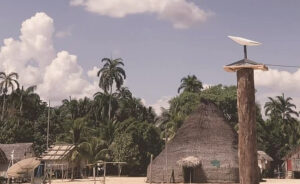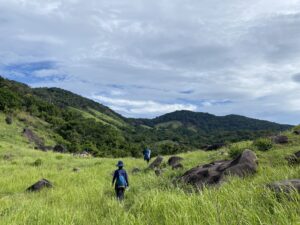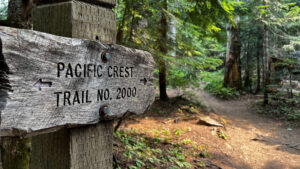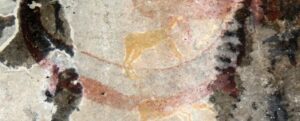The Peabiru Way, or Caminho de Peabiru, was a 4,000km long pathway that linked the Atlantic Ocean to the Pacific.
Though the exact route is up for debate, most agree that it runs from the coast of Brazil, through Paraguay, Bolivia, and Peru, to the north Chilean coast. There are thought to be three starting points to the trail in Brazil: São Paulo, Paraná, and Santa Caterina.
The ancient pathway is mysterious, for decades people have been trying to figure out who built it. Arléto Rocha has spent considerable time researching the pathway and has guided on the route. He wrote that though the pathway may have been a transcontinental trail, there are several offshoots from the main route. These smaller pathways interlink and once led to indigenous settlements. “We’re continuously going to have [new] theories. Sureness about the total course of Peabiru is troublesome, on the grounds that it changed over the long haul,” Brazilian palaeologist Claudia Parellada explains.

Photo: The Disruptive Quarterly
Origins of the trail
Some researchers think the trail dates back 10,000 years, to Paleo-Indian hunter-gatherers. Others believe it dates to 400 CE. There is also a handful of more out-there theories, that the Vikings or Thomas the Apostle created the route.
On one thing everyone agrees, the pathway is more than a trail. It has a spiritual aspect; it follows the rising and setting of the sun. In the Guarani culture, paradise (Yvy Marãey) is located across the water where the sun rises. Their legends describe the interlinking paths as a reflection of the Milky Way. The complex network of pathways links the Guarani search for paradise to the Incan Empire.
Though the path had a divine meaning to the Guarani people, it was later used by colonizers. After Portuguese sailor Aleixo Garcia was shipwrecked in 1524, he traveled the route with a force of 2,000 Guarani people. Along the way, he looted gold, silver, and tin. Historians believe that he reached the Incan region almost 10 years before Francisco Pizarro.
As legends of precious metals and minerals reached Europe, many more Europeans descended on the trails, exploiting local communities to get rich.
Restoration
Many of the paths are now covered by thick vegetation or new towns and roads have destroyed them. But, since 2016, the Government of Paraná has started bringing the pathway back to life.
Workers on the Caminhos de Peabiru project started by researching the historical, cultural, and archaeological records of the trail. They are in the process of opening a 1,550km segment that will pass through 86 municipalities and 29 administrative districts. The Peabiru Path will split into three branches, the first will run 800km from Paranaguá to Peabiru, the second 450km from Peabiru to Foz do Iguaçu, and the third will take you from Peabiru to Guaíra.

Photo: Peabiru Travel
They are mapping trails of varying difficulty along the original pathways. To attract cyclists and hikers, they have chosen trails that pass dramatic waterfalls, mountain views, winding rivers, and historic buildings.
Chief of staff, Guto Silva commented: “The Incas and the Guarani communicated through this trail in the period known as Before Christ, guided by the Milky Way. For the Guarani, it was the land without evil and for the Incas, it was the way to search for the source of the sun. We have in Paraná a wonder of human, social, spiritual, economic, and historical connection.”






